– Welcome everyone to Wednesday Nite @ the Lab. I’m Tom Zinnen and I work here at the UW-Madison Biotechnology Center. I also work for UW-Cooperative Extension and on behalf of those folks and our other co-organizers, Wisconsin Public Television, Wisconsin Alumni Association and the UW-Madison Science Alliance. Thanks again for coming to Wednesday Nite @ the Lab. We do this every Wednesday night 50 times a year. Tonight it’s my pleasure to introduce to you Beth Planalp. She works at the Waisman Center here on campus. She was born in Cincinnati, Ohio and that’s where she went to high school. The high school was called Wyoming High School. It’s easier than going to Wyoming to go to high school.
– [Beth] Yeah.
– Then she got her undergraduate degree at the University Notre Dame in biology and then got her master’s degree at Loyola in Baltimore in clinical psychology and she went back to the University of Notre Dame to get her PhD in developmental psychology. And then she came here to UW-Madison in 2014. Tonight she gets to talk us about one of my favorite topics the emotional world of infants. Who thought it would be so applicable to the adult world. (audience laughing) So those of you who are grandparents or who want to be grandparents, this is always going to be an interesting thing to relive some of your fondest memories. Please join me in welcoming Beth Planalp to Wednesday Nite @ the Lab.
– Thank you. (audience applauding) So my name is Beth Planalp. Thank you Tom for introducing me so nicely. I will be talking about babies today because everyone loves babies and everyone loves watching baby videos, so hopefully you will all enjoy that as well. My research broadly focuses on emotion in infancy and how they learn to express emotions, recognize emotions and regulate their emotions, as well. And more importantly, as we go through the talk, you’ll see what changes how kids learn how to do that. What changes how infants learn how to understand what emotion means and what it is within kind of the broader context of the world they live in. So to start us off because I’ve heard that this is an engaged group. I have a little activity planned actually. So the first like 30 seconds or so I’m going to go through a series of pictures pretty quickly. Just yell out the emotion that you think you’re seeing in the photo. It’s all faces so it shouldn’t be too difficult, but just say out loud what you think the emotion that you’re seeing is, okay? We’ll go a little fast. Okay.
– [Audience] Sad. Happy. Angry. Scared. What? (audience laughing) Angry. Angry. Sad. Surprised. Scared. Bored.
(audience laughing) Happy. Scared.
– Scared, surprised, it’s actually the same thing and we can go over that. But so, you kind of all said happy or sad angry and everyone said similar things if you were paying attention. There were some differences a little bit but in general you all recognized the same types of emotions, which means that maybe emotions are universal, maybe they’re just like definitional variations on different kinds of emotions. But in general you all saw the same thing, which means that emotion isn’t new to anyone. You all see it, you all think it. It’s not a new topic, it’s not something hot kind of in the media, it’s something that people have thought about for a very long, long time. Emotions motivate our behaviors and our thoughts, so everyone understands what emotion is, which actually makes it really really hard to study because people think they know exactly what you want them to say or what you want to hear which makes it harder to study emotions in people specifically. But people have been doing it for many, many, many years.
So Greek. . . I guess theorists, philosophers, Hippocrates and then Galen several hundred years later used to study emotion as temperaments and they thought that the body’s humors, so blood, phlegm, yellow and black bile were all ways all described people’s tendency to behave in certain ways, so for example this, I don’t know if this will show up in the video, but a choleric person here, the person on the left here. . . Oh, okay, well, that’s good to know. . . .is can be kind of difficult and fussy. Sanguine person, the next person, is a little more happy and excitable. The next one, it’s hard to see on these things.
– [Woman] Melancholy.
– Melancholy, so sad and then phlegmatic which is difficult or angry. So these were identified in 300 BC or so, or kind of started to be talked about in 300 BC and then with Galen in 120 AD. So for 2,000 years people have recognized that there are different ways of behaving and identified those kind of based on someone’s emotion or mood that they tend to be in. This continued with Darwin, so Charles Darwin who we’ve all heard with evolutionary theory in 1972 wrote a book called, The Expression of Emotions in Man and Animals. And he thought that emotions– This is actually probably the first book or textbook kind of on emotion that we still use in science. I have it on my bookshelf at home, actually.
But the emotions are universal, they cross species. They are maybe applied differently in humans and they are more evolutionarily adapted in humans but he saw that that there were common universal emotions across different species which brings us to more modern takes on what is emotion. So there are two broad thoughts on how we define and think about emotion. The first one is more dimensional. So it’s across two dimensions of a kind of identification. So the first is low arousal and high arousal right across here. So if you’re high reactive and you kind of feel very, very excitable, or low reactives, I heard someone say bored for one of the cats, right? The cat was bored, it was you. (laughs) So that would be kind of a low arousal emotion. And then again, or also across valence, so positive and negative. So for example if you’re really happy and you’re excited to be experiencing something, then you would maybe fall in this corner up here.
If you’re relaxed and you’re kind of just kind of going with the flow and calm and contented, you’ve low arousal, but you’re still pretty positive so that would be in this over here. If you’re sad, low arousal, so you’re not really kind of anxious about something but it’s a little negative. So this is a dimensional model of emotion, or also called a circumplex model. You can you see it’s kind of shaped like a circle. The other way of thinking about emotions is more categorical or discrete. And maybe you recognize this, this is from the movie Inside Out that came out three, four years ago. It’s a Disney Pixar movie where we have discrete named emotions, the ones that you all called out earlier, so sadness, joy, fear, disgust, anger. And actually, the original theory was that there are six emotions and surprise. So Paul Ekman is a researcher in the 1960s, 70s he came up with this kind of definition of what are the basic emotions and identified these six emotions as basic. So Paul Ekman was actually a consultant on this film and helped them develop the characters and identify which emotions to talk about and how to talk about them and they did not put surprise in the film because they couldn’t figure out how to make it different from fear.
So they would have two characters that were almost exactly the same. So they combined surprise and fear into the one character. But in general, these are more discrete, categorical ways to think about emotion. There are other theories that kind of add in other emotions like guilt and pride and shame. But if you think about it, infants don’t feel guilt or pride or shame. There is a social component, a moral judgment component that comes into play with some of those emotions that come online a little later, so they are called– They are not part of the basic emotion process. They are actually in a theory called DET, Differential Emotions Theories by Carroll Izard. So those are kind of some additional emotions that adults feel and it’s more universal in adults but not necessarily in infants. Which brings us to why do we study infants? Like why if we can’t study all the emotions do we study them when they’re this young? It’s because infants haven’t figured out how to stop us from seeing them yet, right? (audience laughing) They cry and scream and they smile and they giggle and they laugh so we can really study pure emotion before they’ve learned how to modify it, or inhibit it, or regulate it. So infancy is a particularly interesting time I think to study emotion because they can’t tell me that I’m wrong (laughs) (audience laughs) if necessarily, right? It makes it very difficult and I have to infer what they’re doing and kind of try to see how they’re responding to specific stimuli and understand what they’re thinking or feeling but they can’t necessarily stop their emotion.
So you can really tie into this basic emotion theory by studying infants. Other thing with infants though which is both exciting since I’m a developmental psychologist and a little difficult to handle is that they change a lot and very quickly. Kids learn to walk and talk and their cognitive processes come online and they learn to explore their environments. So we study emotion in similar like in ways, but as they get older kind of have to adapt what our processes are, how we think about what emotion is, or as they learn to like look around the room, what are they doing to help themselves with their emotion to express their emotion. So emotions are both fun to study in infants but also difficult because they change so quickly and they’re so context dependent. However, there is– I’m trying not to use too many different words for what I basically mean is the same thing, but temperaments– So like the underlying emotional reactivity to something, the way you respond to something, even though the kids are changing and growing and walking, the way they respond is very, very similar to the way they responded six months ago and the way they responded six months before that. So the underlying tendency to respond to a situation remains the same. So emotions are changeable in their expression but they’re also very enduring over time. Now, to illustrate that I have two videos of children who are no longer infants, but they have very different ways of expressing their emotions. So in the laboratory we videotape and we code behaviors that infants are doing.
We try to use tasks that are similar to what they would experience at home. So in this case with both of these videos, you see there’s an enticing toy, a fun toy and we don’t let them have it. So we are hopefully eliciting some sort of anger or distress response because they want the toy and they can’t play with it, which if you have multiple kids, siblings take away toys, or if kids are sitting in the grocery store in one of the grocery store push cart things that I’m blanking on the word right now, but they want a toy, they want candy, you don’t give it to them. So kids have to go through these processes all the time just in their natural environment and we try to tap into that in a laboratory as well. So we think these are very ecologically valid ways to measure emotion in children. So for the first video and I’ll start that and then you can hopefully hear it. Just the same child at eight months and then 18 months. And these are both just about a minute 30 seconds long. Hope if I can push the button. Actually, start it right here.
(baby cooing) Not too bothered, just watching the toy, trying to grab for the toy but he’s really fine. (audience laughing) Same child 10 months later or so and we’ve adapted the task now so that there’s a large container that they can’t get in so it’s still taking a toy away, or not letting them have a toy, just age-appropriate for their motor behaviors. (toy rattling) (audience laughing) Oops. Oh. (laughs) (audience laughing) But you can see he’s playing with the toy but not super bothered by the toy, or not being able to have the toy. Okay. So the next video is slightly different. (baby crying) (baby crying) This is a little girl who’s kind of frustrated about not being able to have the toy. She wants it but we’re not giving it to her. And 10 months later.
(toddler crying) (laughs) (audience laughing) And then she just gives up. . . (audience laughing) which I think is great. (toddler crying) Yeah. So but they have similar patterns of responding. So the first child, even though it was 10 months apart and it was a slightly different– I can stop this, this just continues– (audience laughing) Yeah, so even though it was 10 months apart, they responded in similar ways. So we used a different toy and a different method of kind of eliciting that behavior because they’re older and they can grab things and touch things and their hands have more dexterity but they respond in similar ways. So emotions are enduring. The expression might change a little bit and the situation might change but the underlying way of responding is similar.
Okay. Are all emotions created equal? I hope not because that’s what I study, right? So the basic premise of everything I do is that emotions develop in different ways and in different families and different children respond to things in different ways. So are all emotions created equal? Probably not, maybe not. I thought I would use an example of data that we have here at Wisconsin using twins to show kind of how a positive emotion and a negative emotion might not necessarily be expressed the same way or developed the same way, even within the same family, okay? So positive versus negative emotions. Using a similar task to the ones in the videos, so we code positivity and negativity as well. So in this case, we have a mom who’s playing like puppet game with her child and then a mom who’s playing peek-a-boo with her child. These are, again, things that kids see every day at home, game playing and engaging in positive kind of behaviors. So moms are kind of eliciting a positive response from their child and we videotape them and record them and then code them later. Similarly with the anger task, we have a shiny toy that the mom kind of holds the baby’s arms down and then one that’s just out of reach and we code these to reflect a negative emotion, or in this case specifically it’s anger as an example of negative emotions. But so we have positive emotions and we have negative emotions that we scored in the lab.
So twins are a special case where have a little bit of control over what’s happening to these two kids in the home. So twins have a completely 100% shared environment. They live in the same house, they have the same parents, they maybe have the same socioeconomic status because they’re coming from the same place, their parents have the same education level because it’s two kids within one family. So we have a high amount of control over this shared environment component. With twins, there are two types of twins, identical twins and fraternal twins. And identical twins share 100% of their genomic DNA and fraternal twins share roughly 50% of their genomic DNA and someone in this building would argue with me, I’m sure about a little bit of that. But in general for the statistical model we’re doing, we assume that identical twins share 100% and fraternal twins share roughly 50%. And then we finally have this unique environment component that we just don’t know where things come from. So maybe if twins are in different friend groups, or maybe one twin kind of had an experience with a rollercoaster that the other twin didn’t have necessarily. So then there’s this unknown unique, or a non-shared environmental component.
So if we expect, oh those colors don’t show up as well. But if we expect identical twins to share 100% of their DNA, and 100% of their shared environment and then we have this extra kind of component, their unique environment, we would expect the relation between twin one and a family and twin two and a family to be fairly similar. So it kind of looked like this, as like illustration of like the correlation between within of twin pair. If they’re not identical, if they share only 50% of their genomic DNA, their shared environment’s the same, but the genetic input on their behavior is not necessarily the same. So we have one twin who might express a lot of a behavior and another twin who might express a little bit of a behavior and then this this unknown component here that could fall into shared environment, it could fall into a unique environment. But it’s not the same as with identical twins. So what we do is we compare correlations. So at the extent to which two variables relate to each other. We compare those four identical twins and fraternal twins separately. So for a positive or a negative effect, for example.
So that we take how one twin acted on those behavior tasks that elicited negativity and how the other twin acted on those tasks and we compare them to each other. If we expect there to be a strong genetic component, then the pattern we would want to see is like this, or I’m sorry, it’s negative emotions. (laughs) Okay, yes, negative emotions. So if there’s a strong genetic component, then the identical twin, here this is helping me, the identical twin. . . the twin one and twin two would have a strong correlation. And in the fraternal twins, the twin one and twin two would have roughly half the amount of correlation that the identical twins have. So in this case, that’s exactly what we see. There’s a strong genetic component for negativity because the twins that are identical are more similar than the twins that are fraternal, okay? I have to get to the next slide where I have the two twins next to each other again.
So with positivity, if there’s a strong genetic component for positivity, we would expect to see the same pattern, right? That’s not what we find. Instead with positive emotionality, we see that the identical twins and the fraternal twins are roughly the same. And, in fact, this looks slightly different but it’s actually not. These numbers are really, they’re not statistically different from each other. So with negative emotion, there’s a strong genetic component and with positive emotion, there is not. Positive emotions might be more environmentally cued, or might be learn somehow, right? We can delve into that a little bit further by using more, strangely enough, understand this better but more advanced statistics that look at not only so that the previous slides only looked at the genetic correlation, it only made an assumption about the genetic correlation based on some behaviors that we had seen. Now we can tease apart different similarities within the families to identify this shared environmental component, as well as how much the unique components, or differences between the twins contribute to a behavior. So again, in genetics the identical twins are we assume have a correlation of one and the fraternal twins, we assume have a correlation of 0. 5. They have a completely common so a correlation of one, common environment or shared environment and no correlation in their unique or non-shared environment.
Using the same data, the same sample, with the anger variables, we see that there is a strong genetic component. So this, the genetic component accounts for a lot of the input on negative behaviors that we’re seeing. The non-shared, this dotted line here actually is not different from zero. So the shared environment is not really contributing anything to these twins’ expression of anger that we see at roughly 12-months-old. And then this, the unique non-shared environment component is accounting for a lot of the variation. That could be different experiences, different moods that day, who fed what, you know, they’re 12-months-old so who maybe has to have a diaper changed or what they ate. But the comparison then, if we look at positive affect, is very different. So we see there’s no genetic affect, or input onto the positive emotionality that we see but there is a fairly strong component for the shared environment. And then, again, similar large component for the non-shared. With even without looking at the numbers, the pattern of results here shows that there’s a strong genetic inheritable affect for negative affect and not for positive affect, okay? What am I forgetting? I was like I need a blank slide just to think about how I will you interpret what that might mean.
We actually looked at that positive affect and what it might be related to in the home. We had moms report on their own positivity and their own negativity and the kind of family wide expressions of good behavior and positivity in their family and we had dads do the same thing. And the mom positivity and the family wide expressions of positive behavior related to the infant positive affect. So we can teach our kids how to be positive and how to be happy and how to see kind of the positive side of things. Whereas the negative anger variables are a little bit more genetic. Maybe we can use positivity to help counterbalance some of those negative things that we see. So positive affect can be taught, can be learned by children. I think that’s a positive, huh, happy thing to say about how we can raise kids and how we can affect policy and what we should be thinking about in long term approaches to like childcare. Okay. There’s one– Oh, see, I knew I needed to put this up here what am I forgetting? Regulation.
So that lovely two factor circumplex model, it has arousal and it has valence on it. But especially in adults, it’s really hard to think about emotion without thinking about what we’re doing to modify that emotion. So I’m forgetting words and I’m forgetting things and I’m freaking out a little bit up here and you can tell sometimes, but I’m also like sweaty and warm and I’m getting really uncomfortable and I’m trying to hide it as best I can so I’m regulating what I’m doing. Everyone does this all the time, sometimes it’s implicit and we don’t even know we’re doing it and sometimes it’s explicit, like me waving my hands a little bit right here just to kind of cool down, but I’m just being very emotive. So there’s this regulation component, this third factor on kind of an idea of what is emotion. We can’t really define emotion, especially in adults without thinking about what we’re doing to regulate it. Emotion regulation refers to the ability to inhibit, so to stop an emotion, stop the negative emotion, to modify, so to maybe take that surprise and make it a fear variable, or to maintain the occurrence or intensity of an emotion. So if we’re happy, we want to stay happy. So you can both up-regulate happiness and down-regulate negative affect, or they all kind of work interchangeably. But emotion regulation is also a really important thing to study and it’s really cool to study in kids because when they’re really young, they can’t do it and then they learn how so we can watch kind of the developmental change and how kids learn to regulate it.
I kind of gave some of these examples, but in adults. So regulation can be very explicit. We can choose to regulate our behaviors. You can meditate or go for a run, if you’re stressed out after work. Those are more healthy adaptive ways to regulate emotion. You could also choose the alternative and maybe drink your sorrows away or bury your head in the sand and deny everything. So those are not necessarily adaptive ways to regulate emotion. But in adults, this is really purposeful and in children it’s not. So in little kids, infants especially, they really can’t regulate themselves, especially before three months of age. So at three months of age, they really depend on caregivers, on all of us to soothe, to pat their back, to get them food, to change their diaper.
Those are actually all helping the child learn how to regulate if they need something, they get fussy and you come to them. Their fussiness is just their way of telling you that they’re uncomfortable, right? They’re not trying to be little annoying things like in their bassinet, or whatever. They actually need something, so by eliciting that behavior from a caregiver, that’s when they start to learn to regulate, ’cause then you come and take care of them and soothe them and that they know that that behavior helps their own fussiness, or their own discomfort. As they get older, so six, seven, eight months, kids are starting– They learn to regulate more effectively on their own. So if you have children, grandchildren, you watch them like when the first time they like suck their thumb for themselves which is closer to like two and a half, three months of age, but that’s regulation, so that’s a self-soothing behavior. They can use like their fingers to kind of pick their clothes, or kind of like smack their lips. Those are self-soothing behaviors. As they have more control over their core stability and their head and neck, they can turn around and look around the room, but those are all regulatory behaviors that seem like they’re standard– They’re very standard motor control behaviors that kids develop but they also impact negativity and negative affect. And then at 12 months, they can explore and regulate more independent. They can use their environment, so if they’re crawling and they’re unhappy and there’s a toy on the other side of the room, they can crawl and go get it and that’s actually, if they’re unhappy, that’s a form of regulation as well.
So it’s not necessarily just. . . emotion regulation, but in infants especially we talk about it as bottle yourself self-regulation. Yeah, okay. So I have a video of it’s like the middle child, the one that’s the– oh, that’s very true– It’s like the middle child in my family, too, now that I think about it. But a child who was fairly well-regulated and it’s the same task but I’m just kind of going to talk through it a little bit and tell you what I’m seeing that they’re doing that’s regulatory. So he looks around, he looks to help, he looks for someone to get him the toy. (baby banging) He’s banging a little bit, so this is not necessarily the most effective regulation to bang, but he’s looking for other things to do. If he looks at the toy, he gets angry and he wants it.
(baby screaming) And then he’s soliciting help, so he’s asking for help. We’re not allowed to give it to him, but he thinks that that should get him the toy and help down, kind of, regulate his negativity. (baby screaming) Making vocal sounds, kind of moving his arms, so all of this you can yes, he’s getting negative, but he’s also like trying to do things to regulate and in the same child little older. Again, you’ll notice he’s doing the same things. He’s looking to the person next to him to help him regulate. Or help him open the toy which is regulatory. He’s using his teeth, yeah. He asks for help. So he’s learned that his caregiver is there to help him. So this is a pattern of behavior that over time kids learn what they need to do to get help, to get attention.
He tries to open it and he asks for help. So at this age, that’s a very regulatory thing to do. It’s the same thing we’re doing when we go for a run, we know what’s going to help us. Or the same thing when you call a friend. That’s what they’re doing. And it’s gone again and he enjoys the game. (toddler screaming) Yeah. Then he doesn’t get the toy back and he gets a little angry. But so in each of these cases, first to show enduring emotion, now to show regulation. These are the things that we look for in the lab to kind of see what they’re doing.
Okay, so I’ve defined emotion and talked about what that is and what it means and how it changes and then kind of defined regulation and talked about what that is and how it changes and what it means. And I tie all of these things together with infants. But I know Tom mentioned I work at the Waisman Center here which is an interdisciplinary research center where we can put all of these things together. So at the Waisman Center– Oh, I can’t see what’s here. If you haven’t heard of it, it’s a center that was founded in the late 1960s. It was funded by Harry Waisman but it was funded by a Eunice Kennedy Shriver Foundation grant that is ongoing. We still have two large funding grants from the NIH on intellectual developmental disabilities, Research Center, and then the Kennedy Shriver Foundation still that kind of help run the Waisman Center. In that building, we have medical physics and engineering. In fact, there’s an MRI in the building on the first floor. The Waisman Center is home to let’s say 60 different kind of faculty labs from 27 different departments around the university.
So there’s medical physics and engineering, there’s psychology. Brain and behavioral development kind of ties those two together and then we have physiology and neuroscience, as well. So we have people who collect blood for us and kind of are looking at some stem cells and the twins that I talked about actually. So all of this is combined at the Waisman Center so we can look at lots of different multiple processes that help us understand emotion better. So this slide from before, so at the same time, all of these things are happening behaviorally, the brain is also changing, right? So we can kind of see in some of these pictures but the brain at around this is a three-month-old brain, it’s kind of just a blob and it doesn’t look super exciting. But seven-year-old, or seven-month-brain and then finally this is actually not 12 but 15-months-old. You can kind of see the colors and the differentiation between the different types of brain matter, in the brain. So these brains are really differentiating and kind of becoming what’s interesting to study, right? So by even in this short period of time, what the brain is doing is impacting motor and cognitive control and emotional expression. But we don’t really know what that means in infants. In adults, the adult brain has been studied extensively, especially with emotion and emotional reactivity actually by a lot of people at Wisconsin.
With infants, it’s a little bit still unknown. However, it shouldn’t be, because infancy is, I’m biased, but I think the most important time in like the brain maturation process. So from this birth to roughly well, in utero, so roughly 34 weeks or so brain development begins at 22 weeks, continues through pregnancy and then at like 34 weeks is when there’s this huge like they call it the growth spurt, the brain spurt of neurogenesis and synaptogenesis so kind of the brain fine-tuning itself in utero. And then but if you see the bottom here from birth to six eight, 10, 12 months, two years now it’s in years, so 12 months to two years of age based on this kind of schematic that’s when a lot of things are happening. In fact, by the time you’re roughly two years of age. . . your brain is 80 to 83% developed what it’s going to be as an adult. So yes, brain development continues through early adulthood but from birth to two, two and a half or so is probably the most rapid increase or rapid growth and changes in the brain. So kids are learning to regulate and they’re learning what their environment can tell them and what parenting behaviors, how that can affect them at the same time that all these brain changes are happening.
So this is the foundation for almost everything else we do, like this age, birth to two. So it’s really important to study babies. I’m putting that out there again. Okay, so how does the developing brain relate to emotion then? How can we tie these things together? And I will be the first to tell you I’m not a medical physicist, I am not a neuroimaging specialist. I’m a behaviorist and I was hired to do all the behavior things for a lot of these studies at the Waisman Center. I work with a wonderful group of people from all of the different disciplines I told you about. We have some in the room that really focus on neuroimaging and the physics of neuroimaging and how we can scan babies, but that’s what we do. We scan babies and my job is kind of to help make them comfortable and help the parents be comfortable and get them in the scanner and then someone else kind of takes over which is lovely because we have a very interdisciplinary team that works together really well. Can’t highlight that enough. The Waisman Center is great for that.
But if you think about an MRI, if you ever had an MRI, you know that it’s loud and that this is not necessarily what we see. What we want is we want to put a baby in a scanner, we want them to be happy and smiley and we want this beautiful picture. And instead we get this, crying and screaming because they don’t like that. MRIs are loud and they’re scary and they like shake a little bit so it’s not necessarily a nice place for babies to be. But we can’t sedate kids, parents don’t really like that. It’s not really easy to get them to sleep unless we do a lot of different tricks and it’s not a fun place to take a nap ’cause it’s so scary in lab. So we do some things in preparation for all of that to help scan babies. We scanned what? We’re at 149 one-month-olds and I’ll be talking about some of that data here by using some of these. So, first of all, we have a prep room where we have a pack and play and then a rocking chair and the moms feed the babies ’cause if you think about when you go to bed you want to be full, you don’t want to be hungry, you want to be comfortable so the moms feed the baby and then changes the baby and rocks the baby to sleep with this little pack and play that we kind of dim the lights and make the room as comfortable as we can for them for the moms and the babies to be comfortable. We put them in what we call a super swaddle.
It’s a vacuum sealed, like life vest basically, where we suck the air out and it really swaddles the baby. And especially when they’re young, babies love to be swaddled. They love that like tightness and closeness, so we swaddle the baby in this MRI safe vac. It’s an immobilizer is what it’s actually called but parents don’t like that either, so we call it the super swaddle. (audience laughing) We have an MRI suite that is you can kind of see that this is actually what it looks like, that’s Bucky on the bore about to enter the scanner, about to go in and we make it really dark. We turn the lights off as much as possible so that it’s dark. We move that infant from a dark room to a dark room. We try not to jostle them too much. We actually have like a cute little board that we can take in. So we keep it dark and then finally again, working with a bunch of people at the Waisman Center who are wonderful collaborators, we have a lot of little tricks and techniques to make the scanner quieter.
So we have this. This is actually a huge piece of rubber and foam that goes inside the big circle part of the MRI machine and it dampens the sound a little bit. We already talked about the super swaddle. These are little mini earmuffs that kind of stick to the baby, they’re specially made for babies and then we also have, they’re not noise canceling headphones, but they’re MRI specific headphones that we take in with white noise and they actually are made to as you go into the scanner, it gets louder and louder, the microphone, or the earphones get a little louder and louder too, we play like rain so that there’s a little bit, they hear the noise increasing slightly and incrementally as they go in so that it’s not like a shock to their system when it’s so loud. With all of this in place, it’s kind of like a really loud refrigerator instead of a crazy loud MRI machine. So the babies mostly, especially at one month, which is when we’ve been scanning them, sleep right through this for the most part. Some wake up, there’s nothing we can do about that. We just start the process over and they go back in. But doing all of that, we’ve scanned 149 one-month-olds. This is actually over a little while ago successfully so it was 97% of our sample that we got successful scans on which is pretty good.
That doesn’t work. So these are actually the images that we get from our study. So we have structural images that show us the gray matter of the brain. So that’s these two right here. So if you think about brain development, you have gray matter and white matter and gray matter in the brain is kind of like where all the things are done, the computations are done, it’s like the buildings, everything happens in the buildings. And then you have the white matter that it’s not why not here, obviously, but it’s these colorful kind of traffic patterns. And so the white matter is how things move throughout the brain, it’s the traffic flow, it’s kind of the processing kind of goes between like gray matter buildings with the white matter. It’s a very oversimplified way of thinking about it. But so we can look at not only volumes of structures but also how effective the traffic flow is moving, okay? And doing that, so we relate that to some of the behaviors we see in the lab so we also have the babies when they’re six-months-old come into the lab and do all of the emotion things I discussed and then all of the regulatory behaviors I talked about. So we code how well they regulate visually so how much they look around the room and how well they regulate with motor behaviors, so kind of the thumb sucking and playing with the table rather than getting a negative expression on their face.
All of those are very effective, by the way. So in a separate study not done here at all, but coding all of these behaviors’ negative emotions and then a regulation behavior every second in these paradigms, if the baby engaged in a regulatory behavior within three seconds of that negative expression, they didn’t have any more negative expressions basically. So these behaviors actually do regulate negative affect in infants. Okay, this will be interesting, I don’t have words. So what we find very basically kind of we’re starting to look at this data right now is that in certain areas of the brain that have been identified as regulatory in adults, so again, we don’t exactly know what’s happening with infants right now. The first kind of bigger studies of regulation in children don’t start till the kids are about five-years-old. So in infants, we’re assuming that there are similar processes in adults. So we looked at certain brain regions that are implicated in regulation in adults and saw that infants who have a larger right parahippocampal gyrus and the parahippocampal gyrus is really important for memory formation and for learning, so that is important for regulation, have better motor regulation. So at one month of age, these infants with a larger right parahippocampal gyrus have better motor regulation. Yep.
Okay. For visual regulation, it’s slightly different but infants who have a larger– It’s actually left. I think I switched the picture but a larger left insula has better visual regulation. So the insula is kind of like the traffic cop over the brain, so it’s not really that surprising that kids who have a larger insula are better regulated. It could just be that these kids are a little bit more developed at this age. But these are both areas that are seen in adults relating to regulation and we’re seeing it at one-month-old, as well, so that’s promising, at least for kind of the future. But we don’t always know that bigger is better necessarily. So we also look at more micro structures. So the white matter, the traffic flow, what the neurons are actually doing. We have two ways to think about that.
The first one is with neurite dispersion, the second is with neurite density. So if you think about your hands and like you think about like spreading your fingers, your hands when you use them like this are not as effective as when you can kind of pinch or something, right? So we don’t want a lot of dispersion. We want them to be effective and streamlined. So in this case, as neurite dispersion gets bigger and wider regulation goes down. So not only are certain areas of the brain larger, but they’re actually less effective, less streamlined and that’s relating to regulation later. And the same thing for neurite density. Density we want to be good. We want a lot more neurons to be more effective, right? So we want a higher number of neurons in the kind of space that we identified and that’s relating to higher regulation. So not only is volume in the brain different in relating to regulation, but the microstructure, the refinements of what the brain is actually doing is also relating to regulation in ways that we would hope to find. And these are all in areas that are kind of the same as areas we would find in adults.
Okay? So there’s what is emotion? What is regulation? Think about it in twins and we can say that emotions develop differently and then think about a brain and say it exists really, really early, which is I think impressive and exciting. But when I started grad school not all that long ago but many years ago, I wanted study kids. I want to know how you can grow up in the same family and be very, very different ’cause we all have siblings that we’re very different from and we just don’t understand why, right? But I thought I could study children and just study children and it would be great and fun and exciting and I forgot completely about this. So parenting is really, really important. Most of my work is actually on parenting. I mean, it has been for 15 years, but the first six months of grad school I was really gung-ho on just studying kids. So study of child development is inherently rooted within family systems, or inherently rooted within the environment that the child grows up in. So how does parenting tie into all of all of this? Kids learn to regulate and express emotion based on repeated interactions with their caregivers, right? You saw the kids in the videos looking to their caregivers for help because they knew they could. So parents are important. Oh, I did say that.
So briefly I just have like one example kind of from each study that I talked about but in that this brain imaging study we are studying regulation and we have a lot of measures of maternal stress and depression and anxiety. And one of our kind of very initial findings from a wonderful grad student in our lab found that maternal stress is related to motor regulation. So moms who are more stressed in their home and the stress variable was about eight different kind of different types of questions. But in general, more stress, experienced more stress had children who regulated less. Now, it could be that these moms aren’t modeling regulation for their kids, they have too much going on so they’re not paying attention, or their child is seeing ineffective regulatory behaviors. And moms who exhibited more depression had children who used visual regulation more. So you’re thinking oh this is great, moms who are depressed have kids who regulate more. But if they’re using visual regulation, they’re looking away from their mom. They’re looking around the room to try to find the source of their regulation, so they’re not using their mom as a source of support maybe because their mom isn’t when she’s at home. She’s kind of focused on herself, or something else, or sad, or not paying attention to her child.
So parenting really impacts how kids learn to regulate behaviors and this is from the brain imaging study. So this is all kind of data we’re working on here at Wisconsin. If you think about involvement so parent involvement in the home just basic changing diapers and feeding and playing games and singing songs in general this visual kind of regulatory behavior is a good thing and it increases over time, they’re learning to do it a little bit more. If you can kind of see, I have two lines here, the blue is behind the red. But on average, kids do this the same with both their moms and dads which is great. My dad loves when I talk about this because he gets to tell everyone his daughter is a fathering expert which I actually that’s kind of what I focus on. But when dads are more involved, look how different it is. So when dads are more involved, kids learn to regulate more affectively much more quickly. So dad involvement in the home is different than mother involvement. Now, the reason I think mother, this actually doesn’t change, this is exactly the same as just statistically the numbers look a little different but it’s all right around zero.
Moms are always engaged in the home, right? So it’s not like moms are doing less. It’s just that dads are kind of adding on, on top of that. So when dads are involved in the home, kids regulate more affectively. Okay. So we talked about what emotions are, how are you feeling today? I’m none of these but maybe a little bit of all of them. High anxious a little bit right now. Babies are cool, they change, they develop. Emotions and behaviors and everything changes with them, it’s just fun to watch and parents are important, too. I don’t focus too much on parents here but I have a lot of that if you have any questions. Parents are important, too.
But why is all of this in infancy, why does it to relate to anything later? Why is it important later? Two brief examples of studies that I’ve worked on where we study child regulation in different aged kids, so older kids, or look at parenting, or look at like a health outcome. We study how parenting and regulation relate to health, like specifically BMI. So in one study where we had child BMI when they’re three-years-old, so these are three-year-olds now, they’re not six-month-olds, or eight-month-olds. We looked at parenting behaviors and how they related to child BMI and it doesn’t relate. There’s no significant relationship. That’s why this is a dotted line and not a solid line. Parenting did not directly relate to child health outcomes. But when we include child regulation in a case the way we measured it here was dysregulation so inability to regulate, then parenting was significantly related to regulation which was also significantly related to BMI. So parenting and child health outcomes aren’t necessarily directly related unless we take into account the child’s regulatory behaviors. Okay? So this is with four-month-olds, 20, 30-month-olds and 36-month-olds but they’re still pretty young so what’s the next step? Well, let’s look at them when they’re five because, of course, that’s a little bit older.
We saw the same pattern, though. Negative parenting, in this case, relating to child weight at five years, not related at all. Oops, I already went ahead somehow. But when you add in this this regulation component, the dysregulation, then we have a pathway that takes negative parenting impacts child regulation which we saw. And then child regulation impacts weight health. So parenting and regulation are important in the childhood obesity epidemic that kind of we see a lot of right now. In general that’s health outcomes. So child regulation and this is early, young children before three-years-old relating to health outcomes. It’s also related to parent-child relationship quality which I don’t have a lot of examples of, I didn’t put any examples of this in here, but just to kind of highlight, relationship quality with your parent, it teaches you how to interact with peers and with partners later in life, so this is important. Child regulation relates to academic achievement and academic attainment.
If you think about kids who can’t sit down and open a book, or read a book, or sit still, they’re not going to do as well in school as their peers who can regulate as effectively. Not because they can’t do well in school but because they just don’t sit still quite as easily. And then finally, and the one I want to hit home is child and adolescent depression and anxiety. Childhood regulation is directly related to problem behaviors of both internalizing, so kind of make anxious behaviors, and externalizing behaviors, so kind of conduct disorders and being oppositional and being angry all the time. I’m going to try to highlight it a little bit, but so estimates say that I think 12 to 15% of children between the ages of three and 17 are diagnosed with some sort of anxiety or depression disorder in their lifetime. That’s a lot of kids. Like if you think of how many kids are in the US, 15% of them have some sort of adolescent anxiety or depression. It costs the United States– the NIH’s latest, it was like 2014– $250 billion a year just for this right here. But if we can teach our kids to regulate, teach them how to be happy and teach them all the positive things that like you can do really, really early in infancy, we can try to help that a lot earlier than I think people have thought was the case before. So everything I’m doing is in kids and it’s fun but this is why, like this is what the interesting thing is.
So we can like curtail these problems as early as possible so they don’t happen, okay? And that’s pretty much it actually. So thank you to everyone who like, you know all the funders and the schools and the funding resources and all of the people I work with. And that’s all, thank you. Sorry, I kind of ended on the big public health, but. . . (audience applauding)
Search University Place Episodes
Related Stories from PBS Wisconsin's Blog

Donate to sign up. Activate and sign in to Passport. It's that easy to help PBS Wisconsin serve your community through media that educates, inspires, and entertains.
Make your membership gift today
Only for new users: Activate Passport using your code or email address
Already a member?
Look up my account
Need some help? Go to FAQ or visit PBS Passport Help
Need help accessing PBS Wisconsin anywhere?

Online Access | Platform & Device Access | Cable or Satellite Access | Over-The-Air Access
Visit Access Guide
Need help accessing PBS Wisconsin anywhere?

Visit Our
Live TV Access Guide
Online AccessPlatform & Device Access
Cable or Satellite Access
Over-The-Air Access
Visit Access Guide
 Passport
Passport
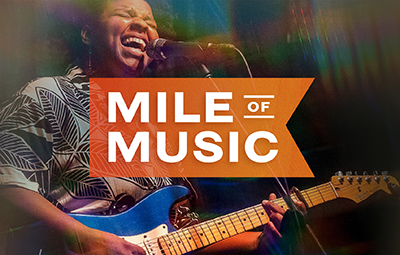
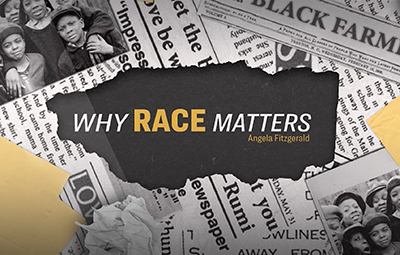



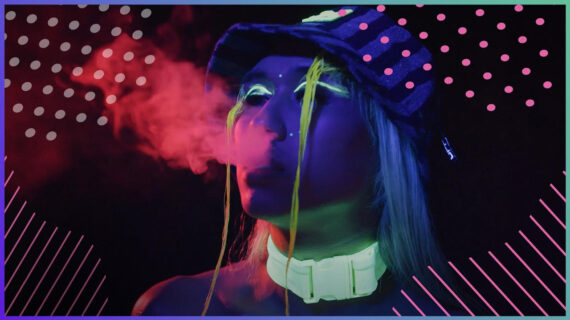

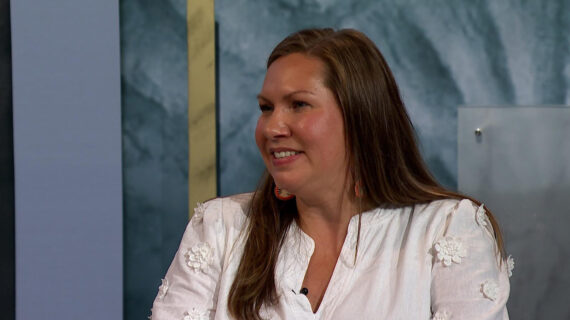
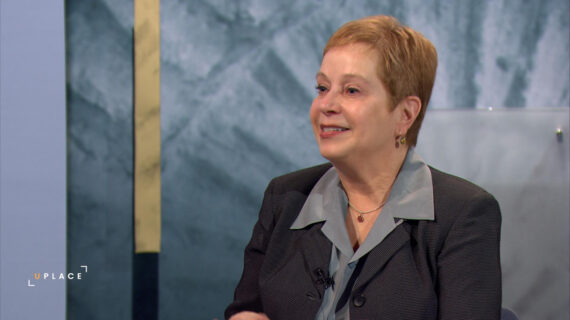

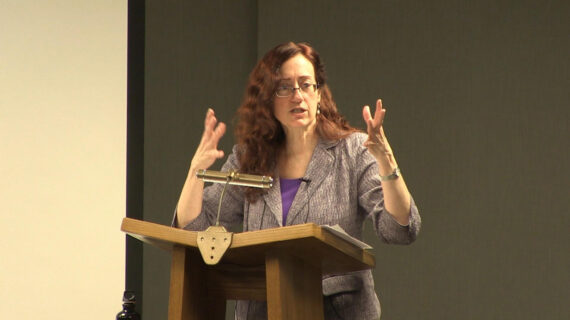
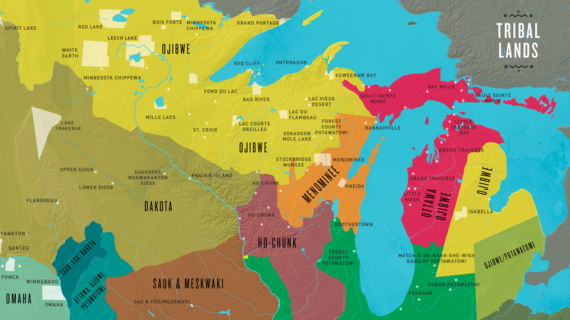

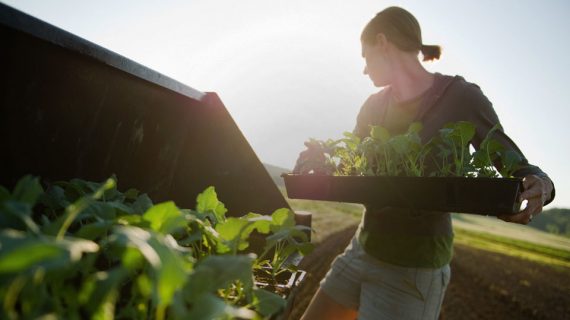
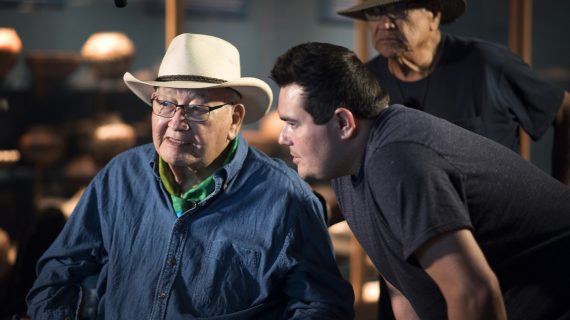
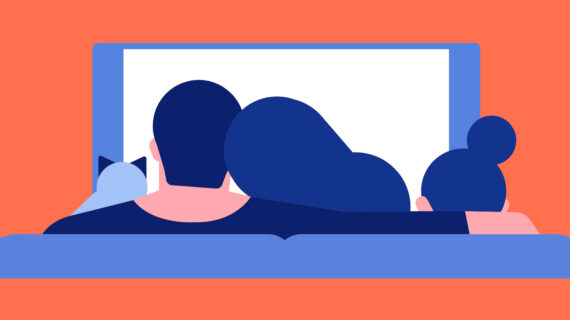
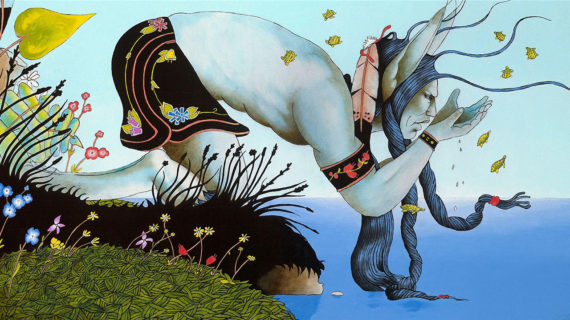

Follow Us